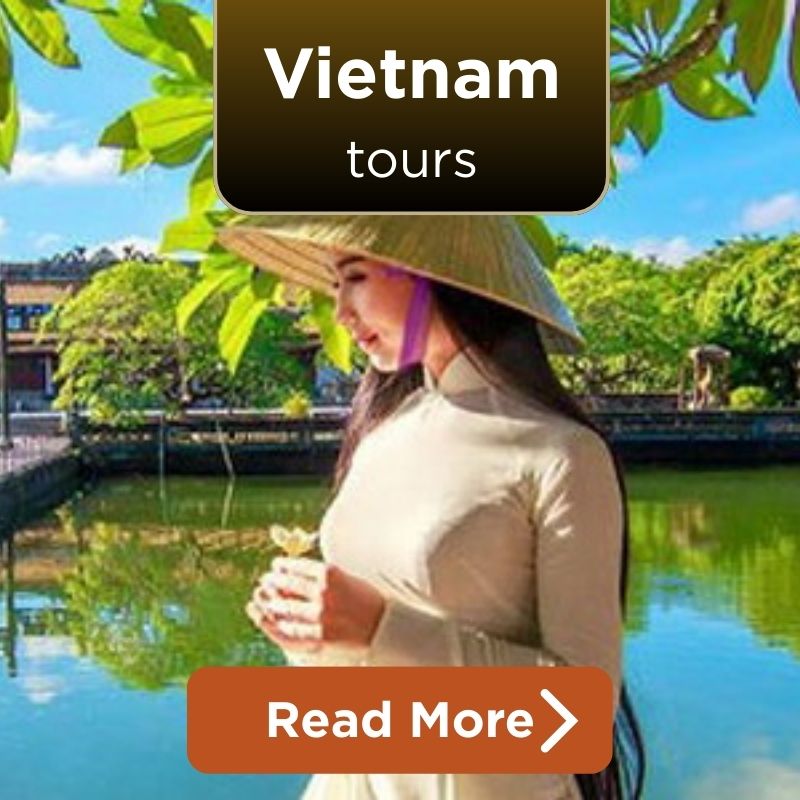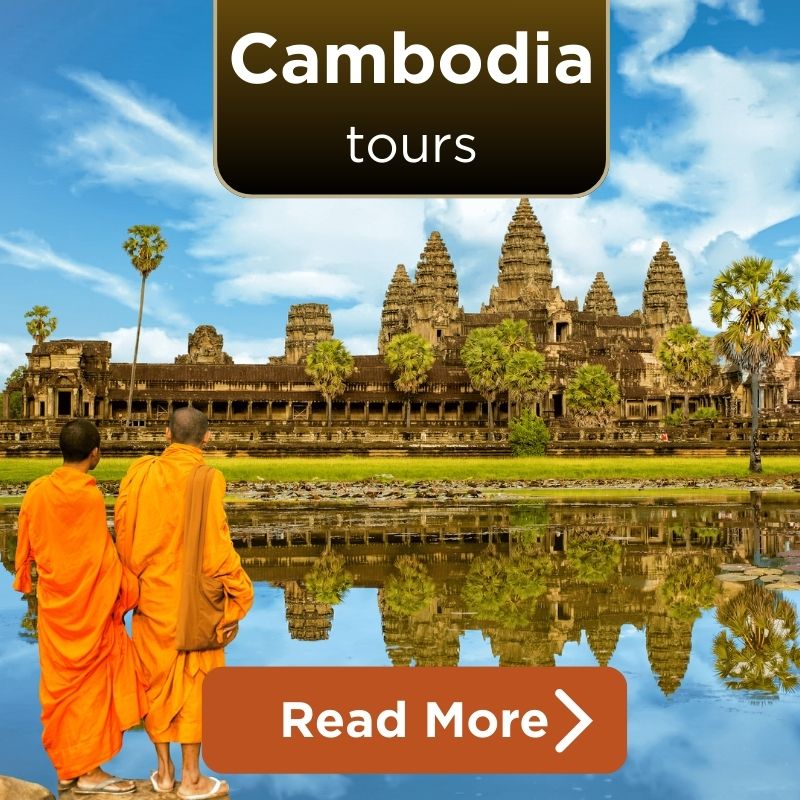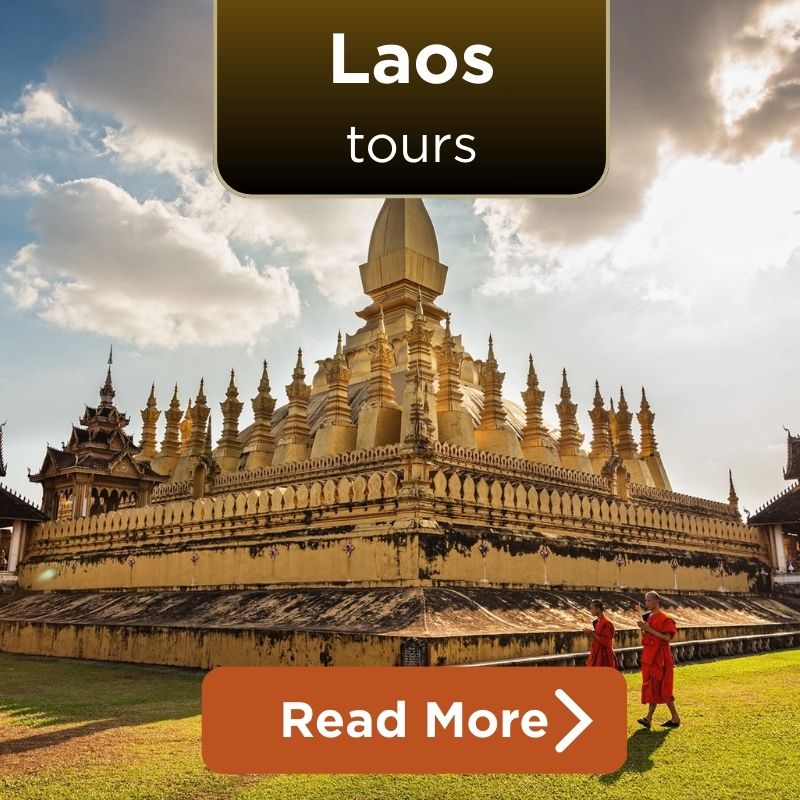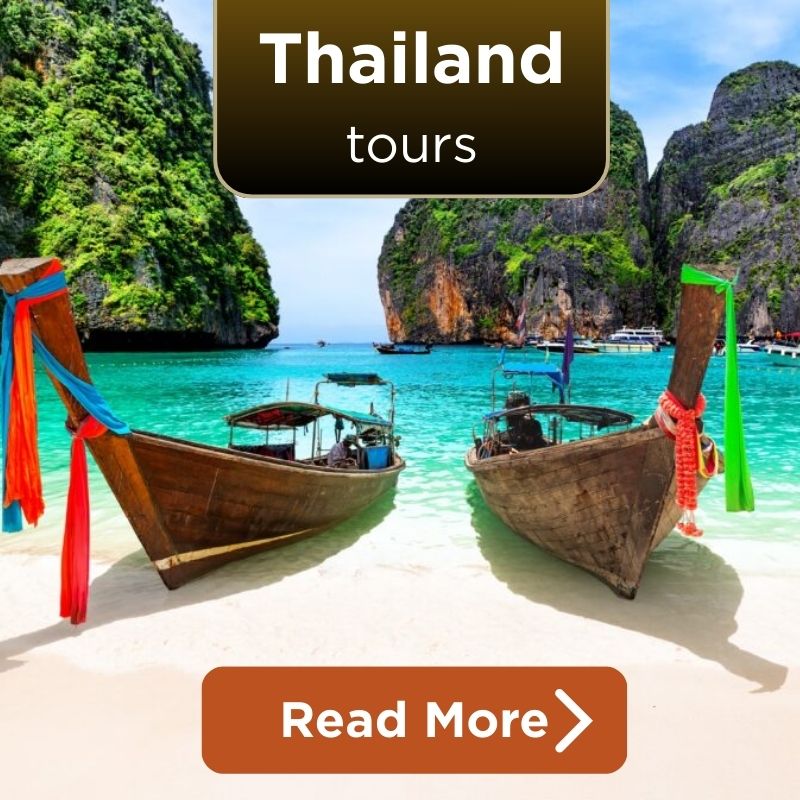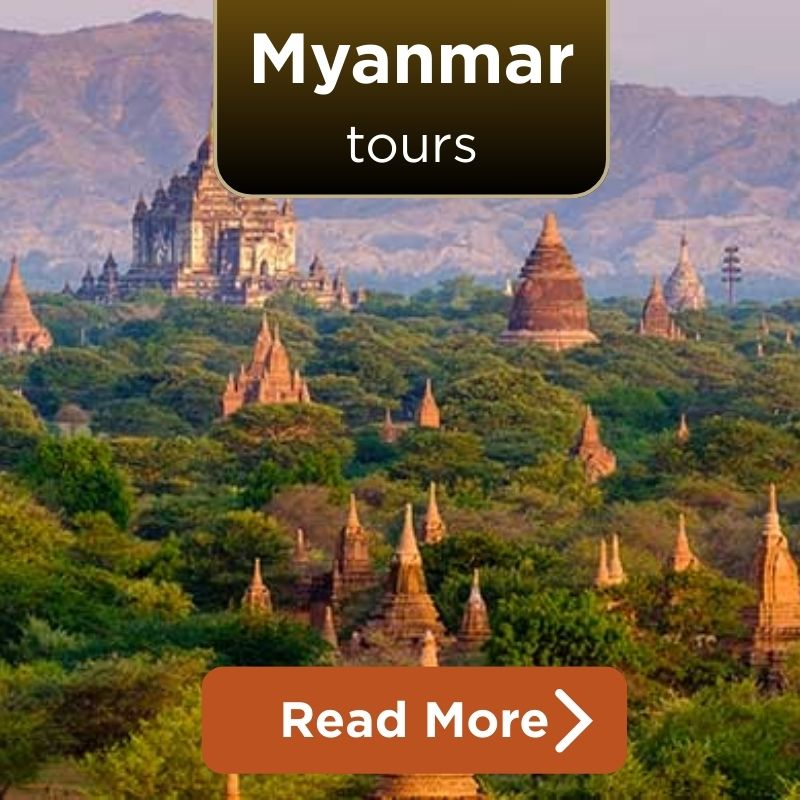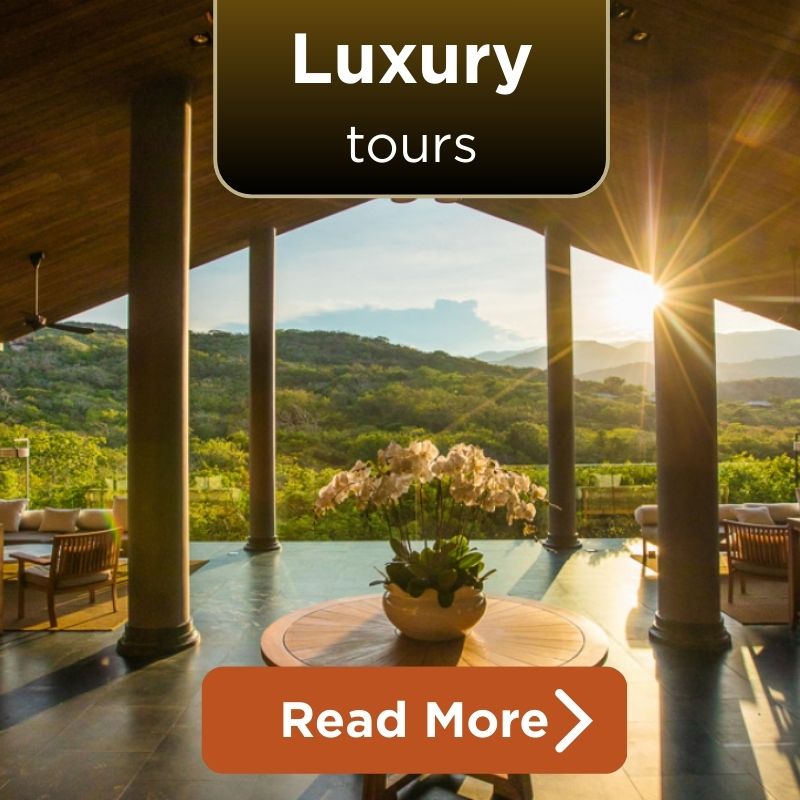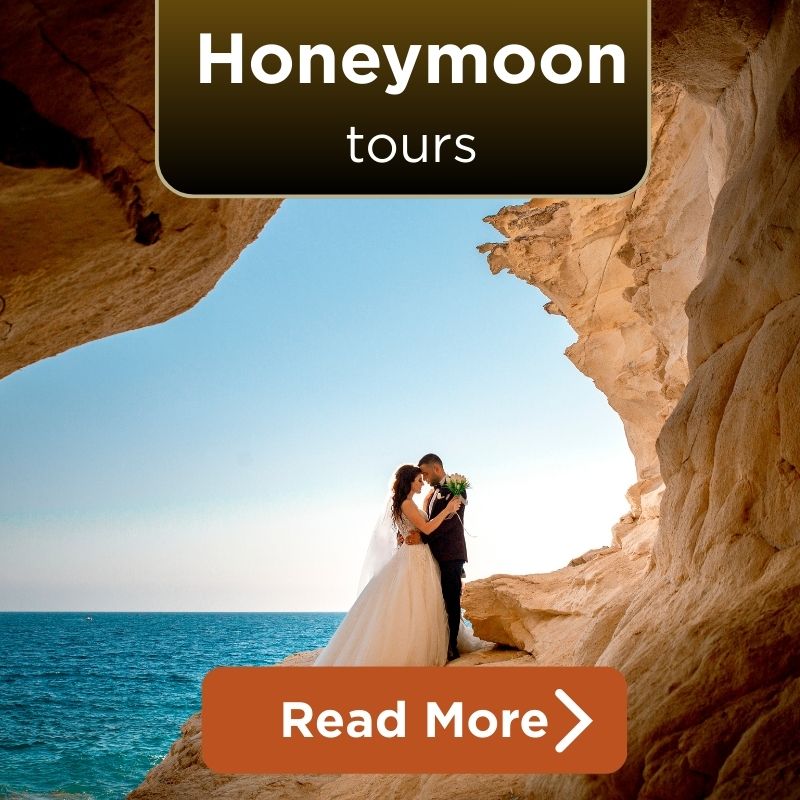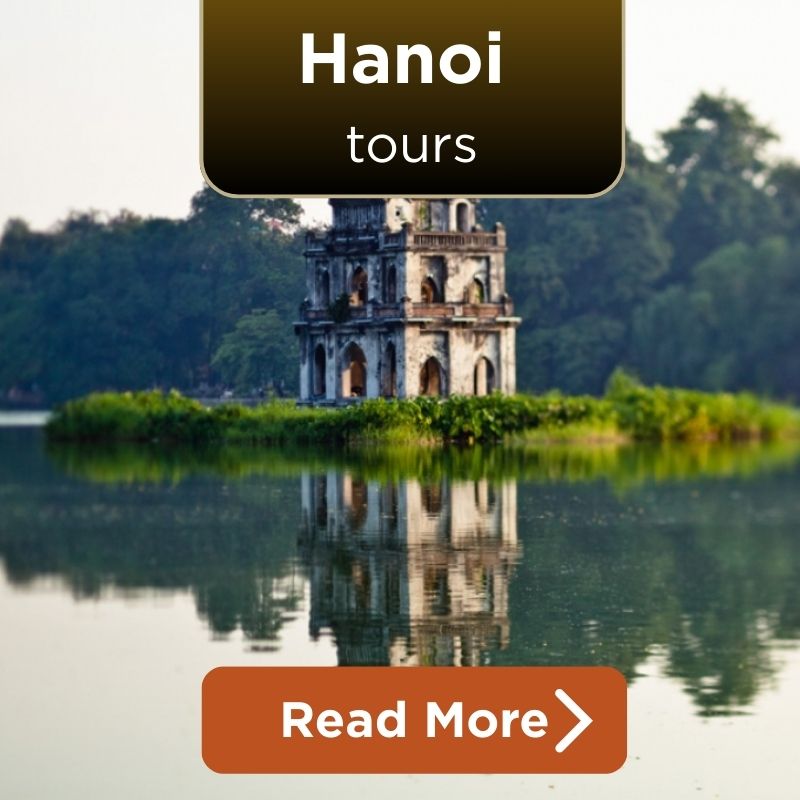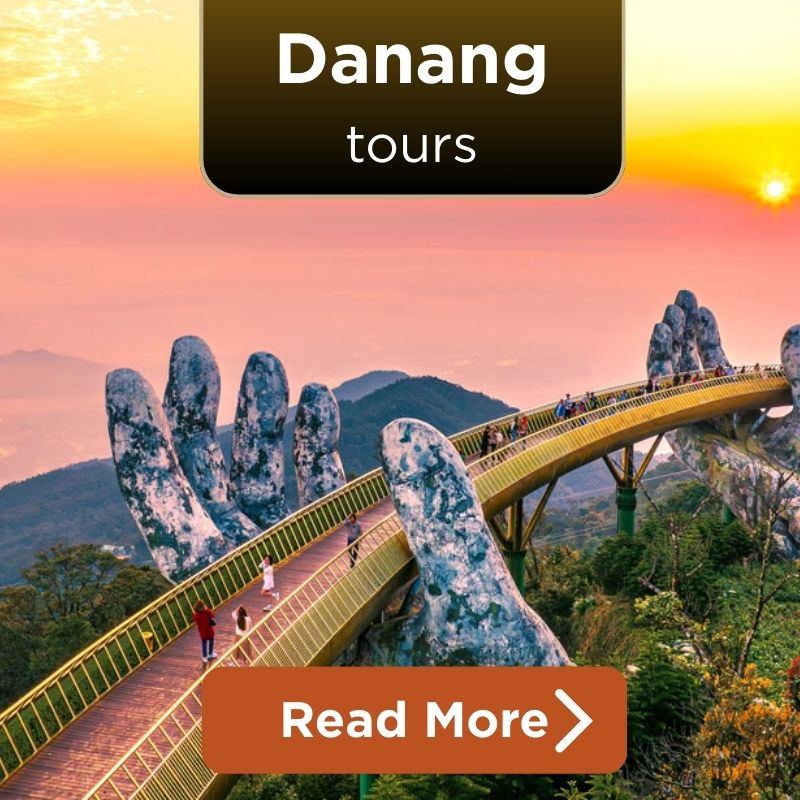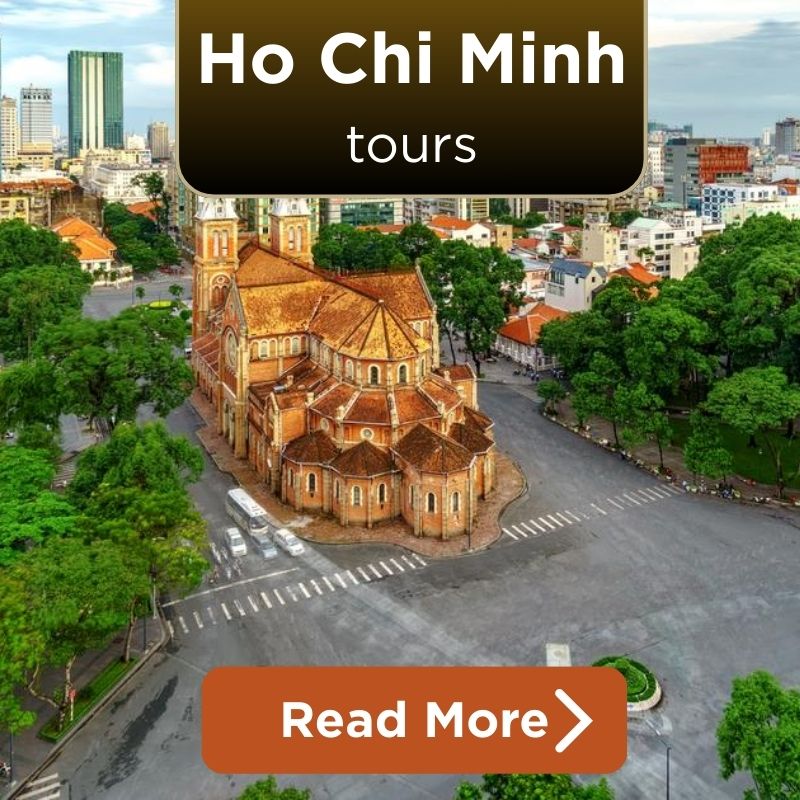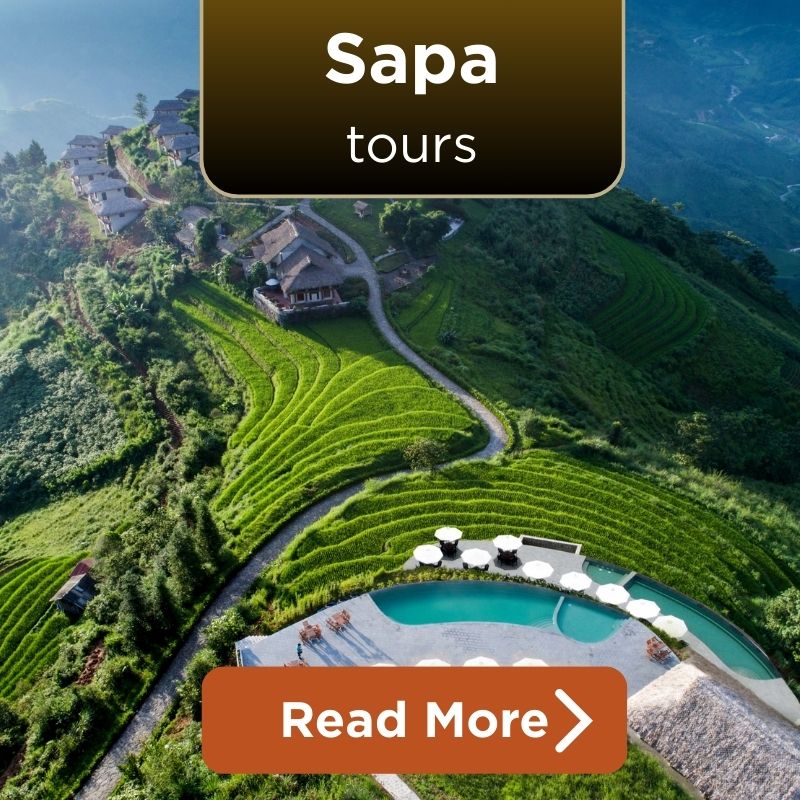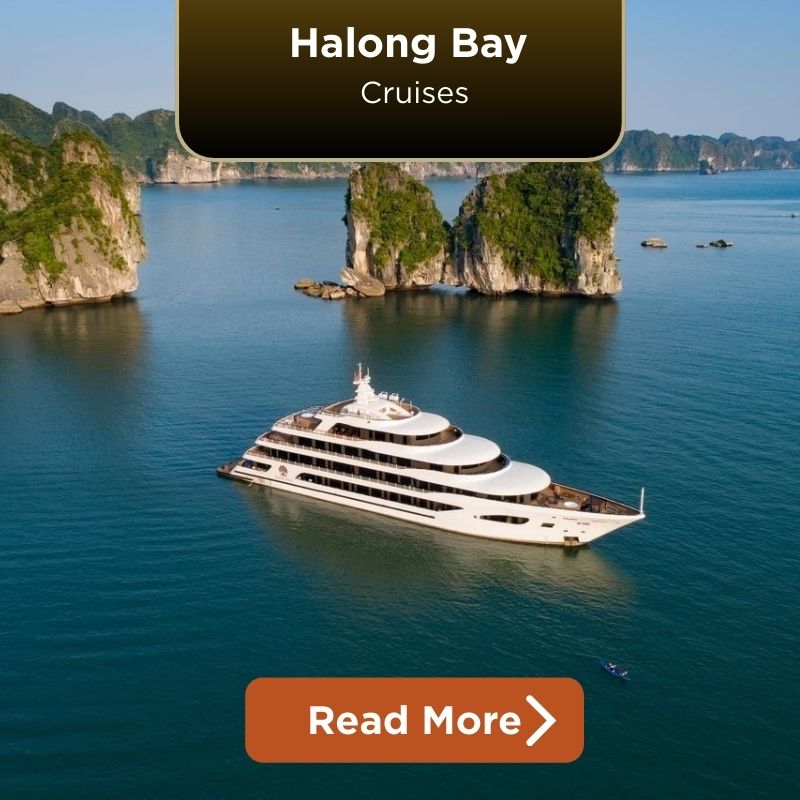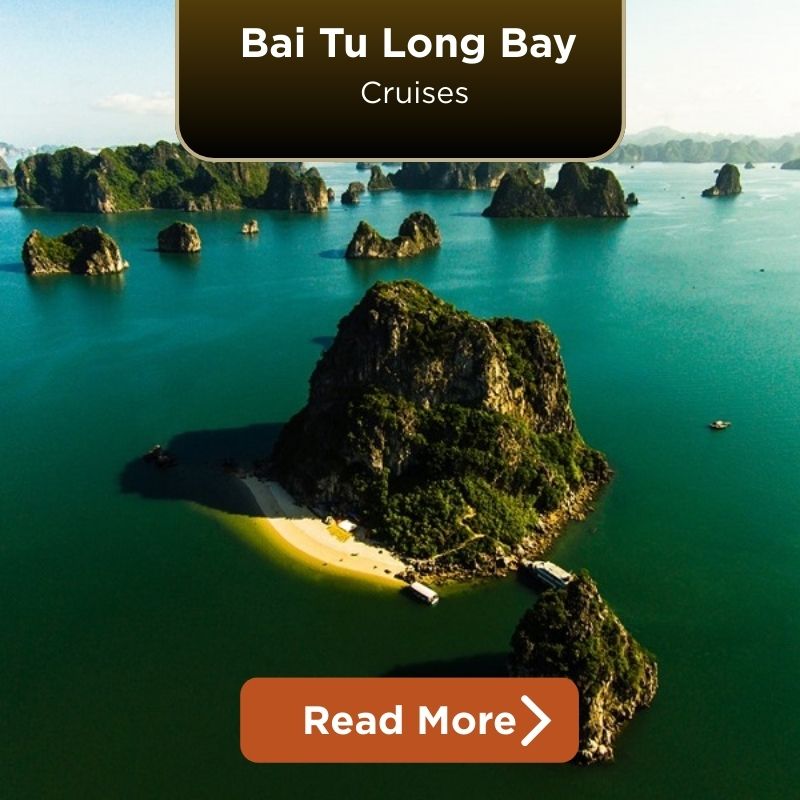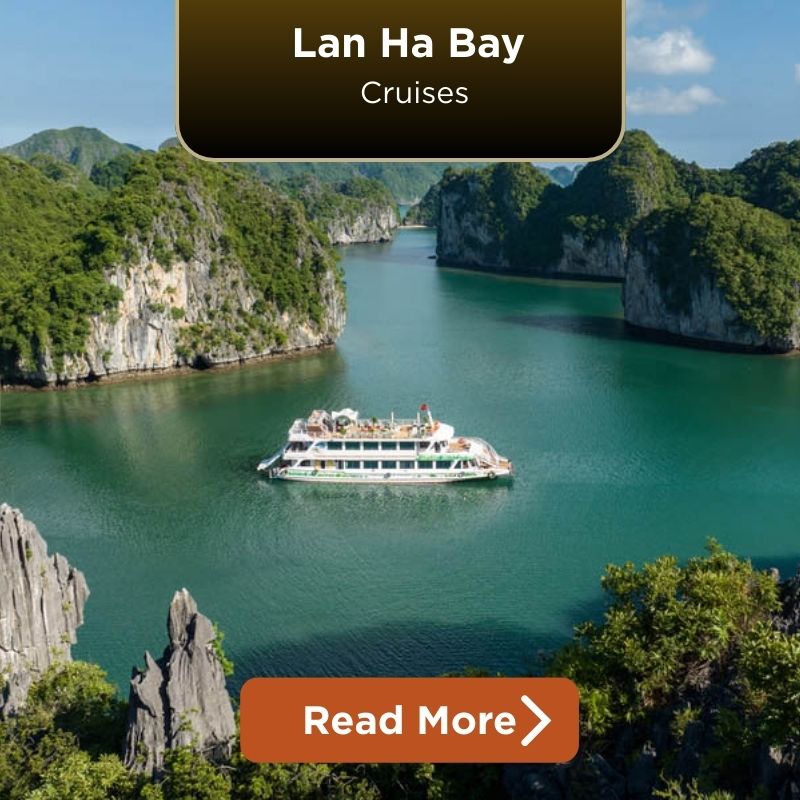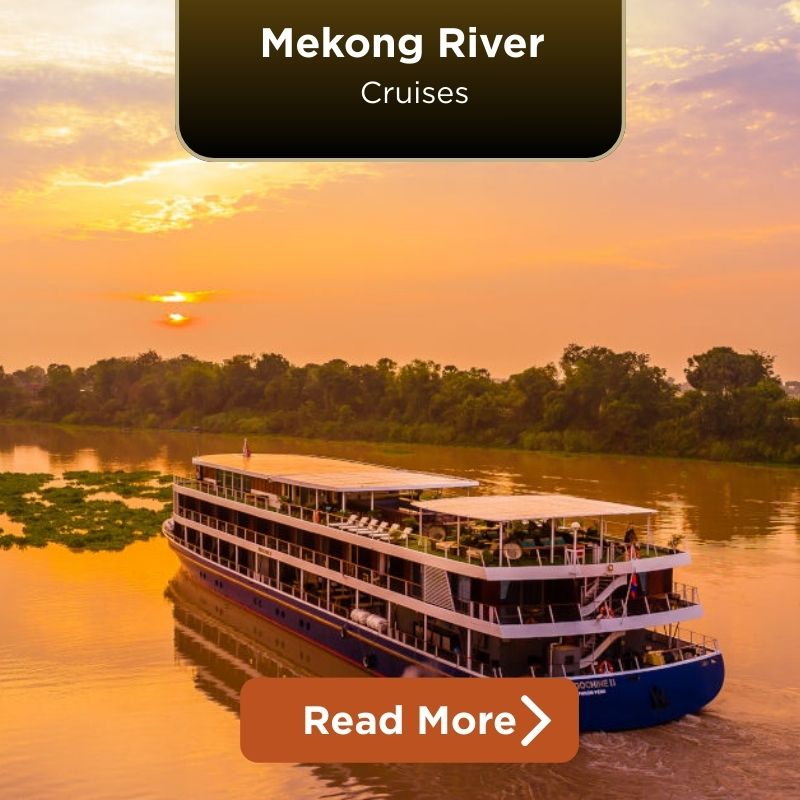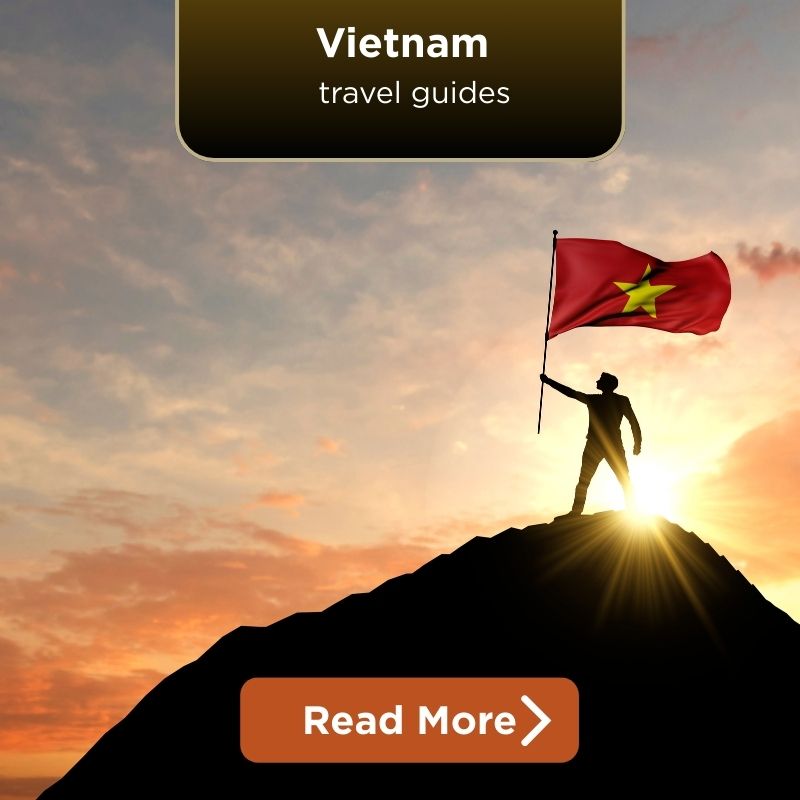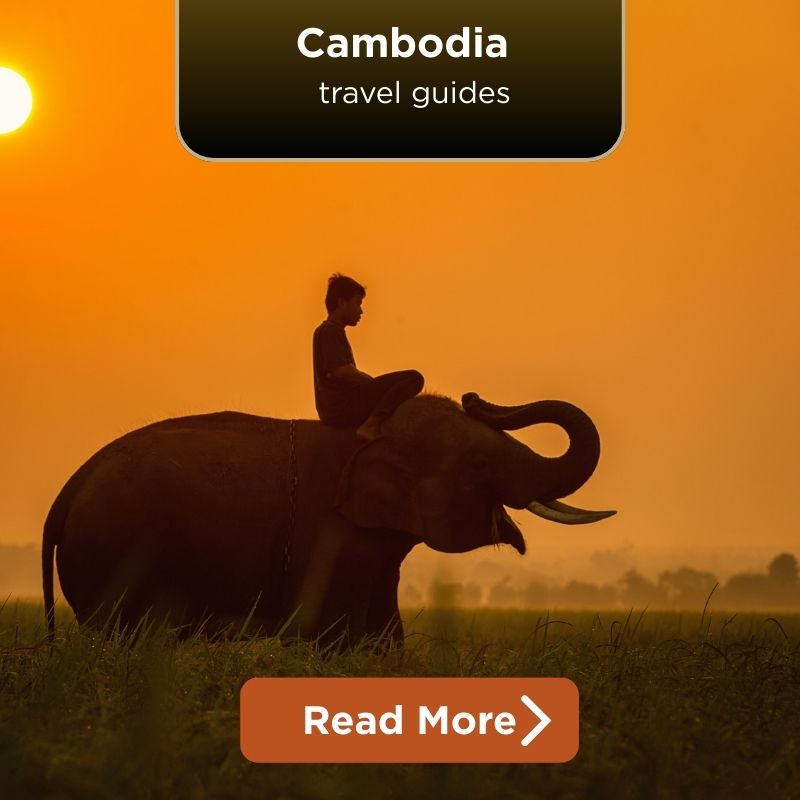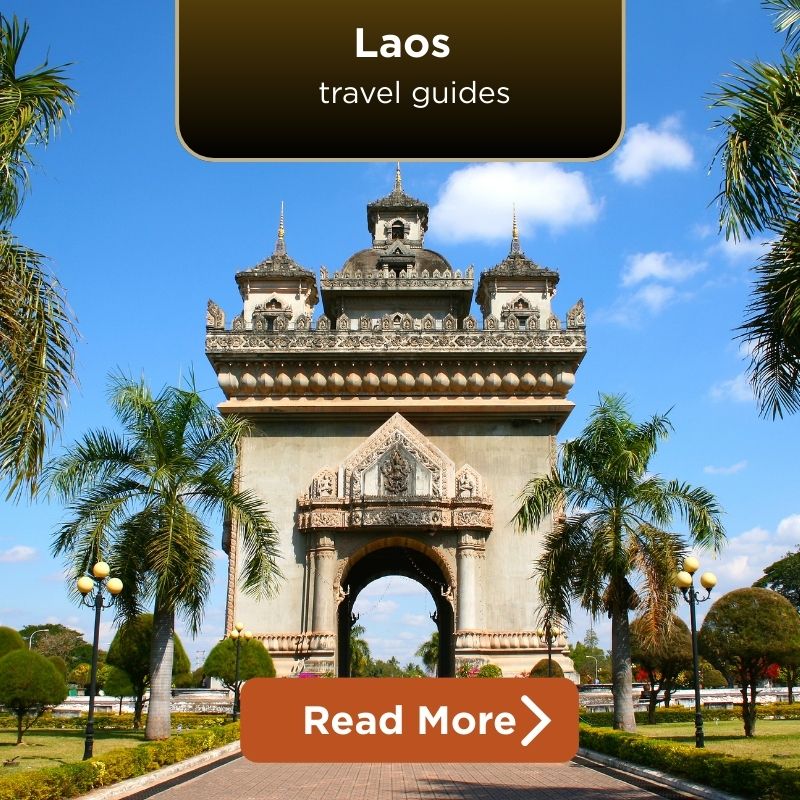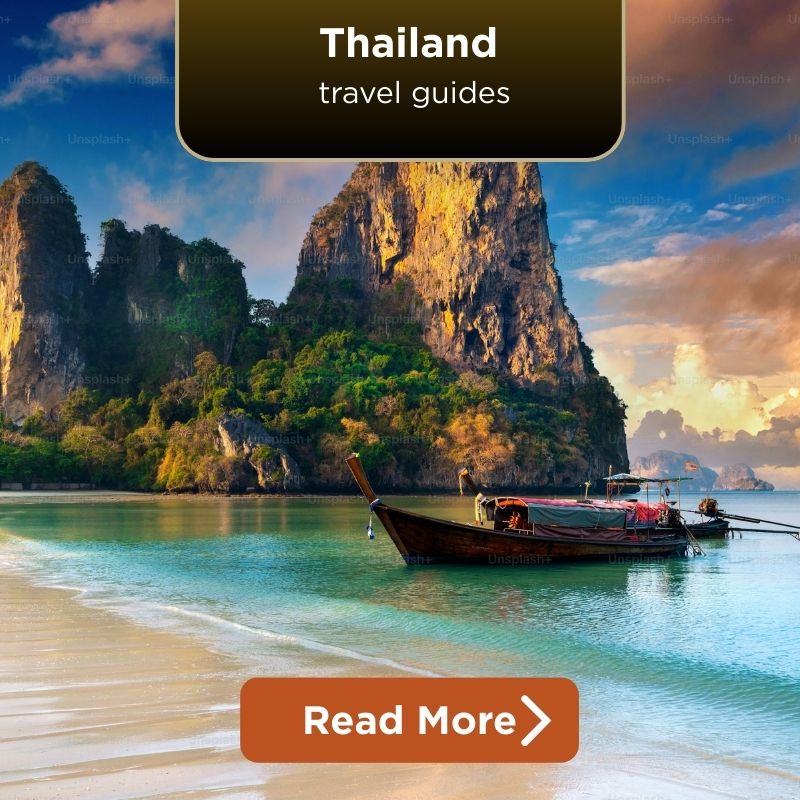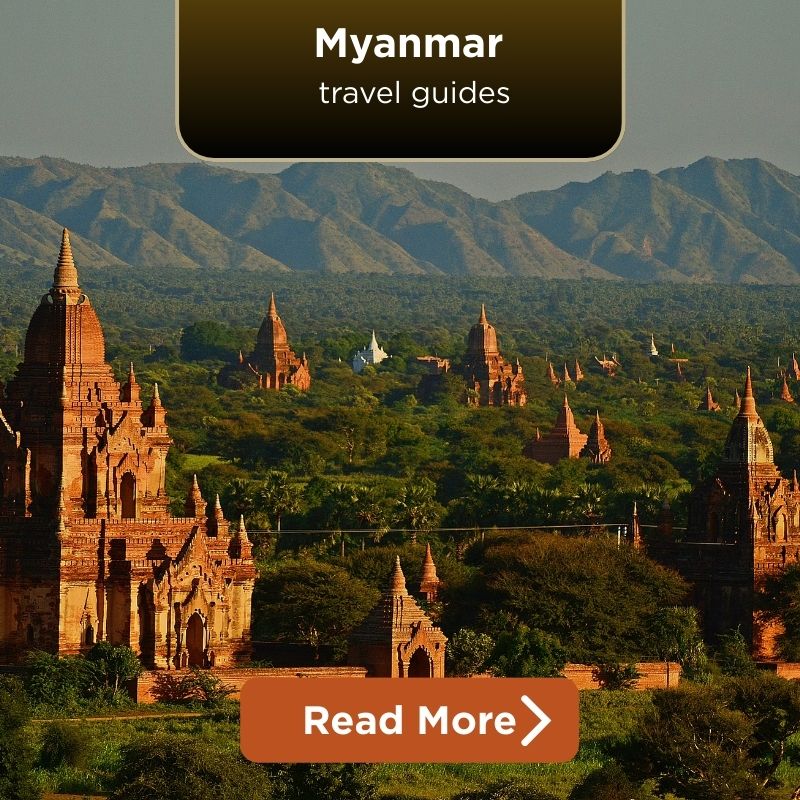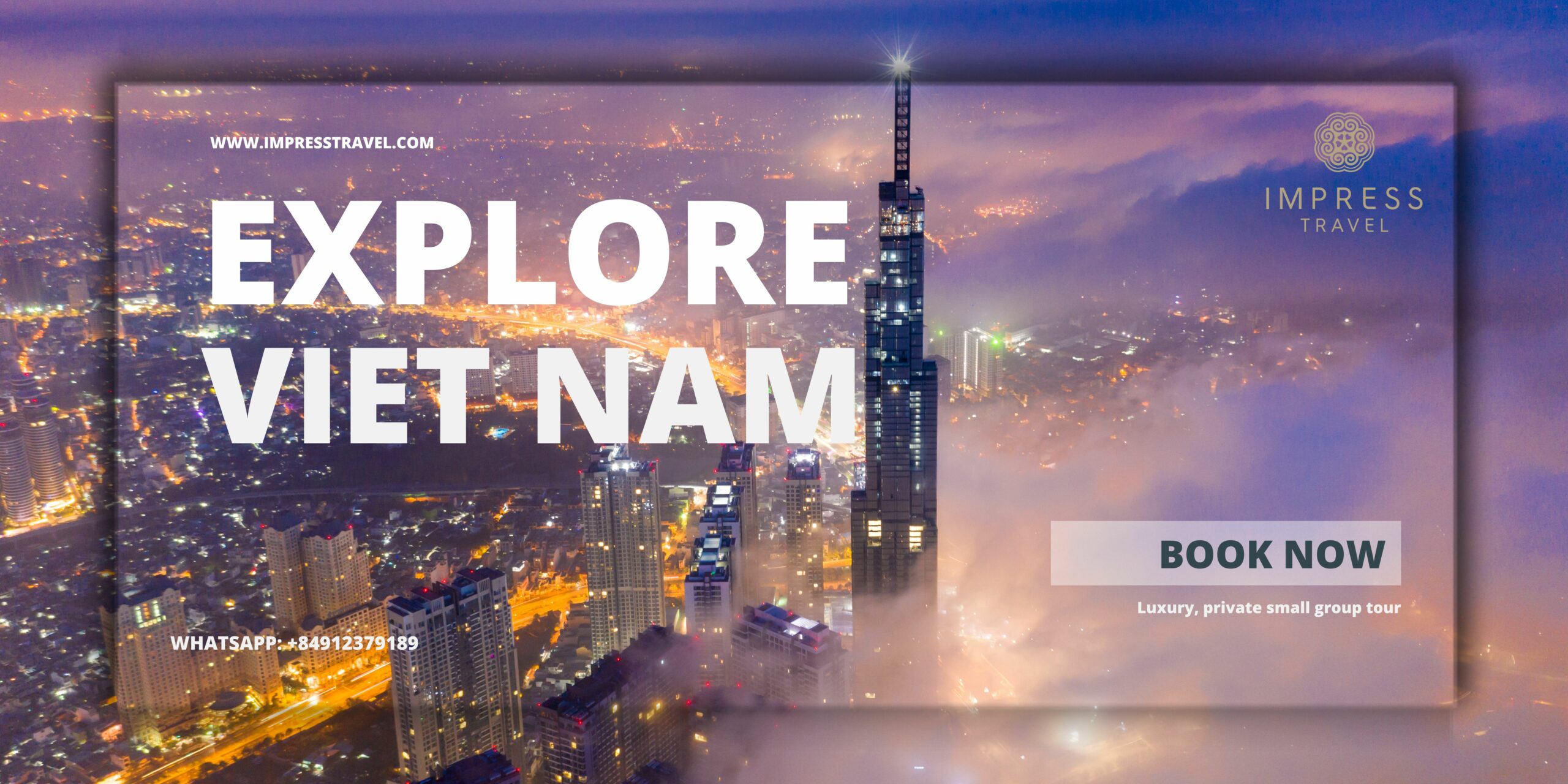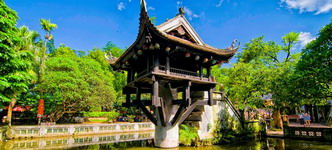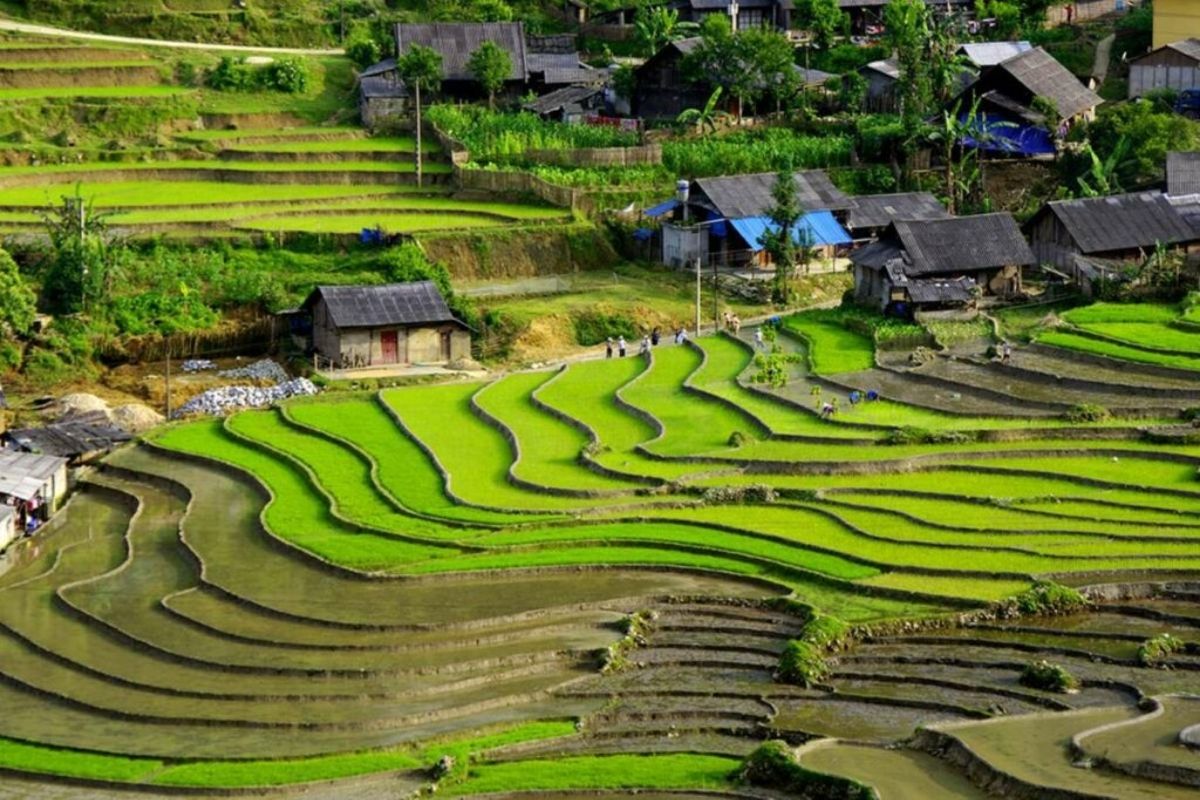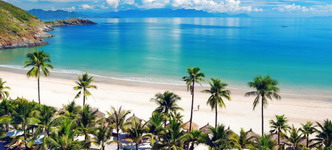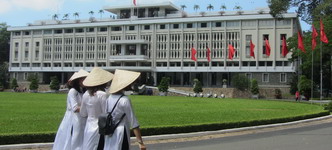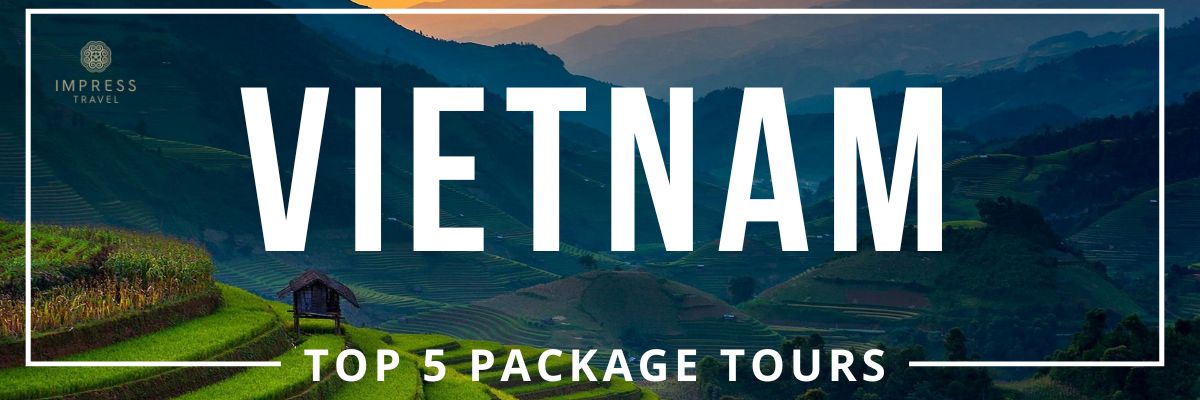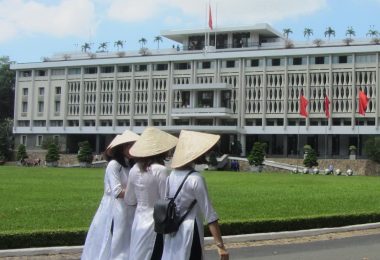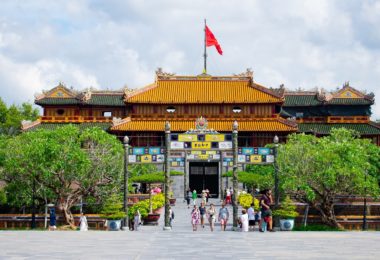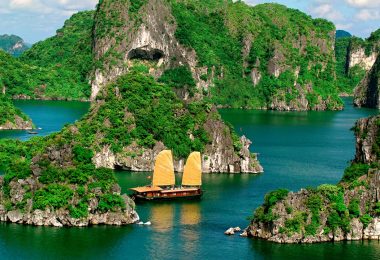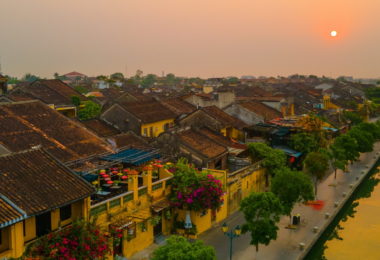Traditional Vietnamese Attire – A Window to Cultural Identity
The Elegance of Ao Dai (Vietnam’s National Costume)
The Ao Dai boasts a rich history shaped by the development of Vietnamese culture and history. From ancient times during the Dai Viet era, it has changed with the years and mixed both traditional Vietnamese culture and fashion. Starting as the outfit for royalty and nobles, the Ao Dai later became a national dress, celebrated by both women and men with pride.
- Cultural Significance: The Ao Dai Vietnam is more of a cultural expression of elegance and humility through its flowing style, which caresses the body yet does not reveal too much. It is not merely a dress but also makes a cultural statement.
- When and Where to Experience Ao Dai: The best time and place to see Ao Dai is during grand festivals and cultural functions:
- Tet Festival (Lunar New Year) – Celebrated nationwide, particularly in Hanoi, Hue, and Ho Chi Minh City. The streets come alive with women in colorful Ao Dai, representing abundance and happiness.
- Hue Festival (Every two years in April) – In Hue City, the former capital of Vietnam, it’s possible to see traditional Ao Dai performances during the cultural parade.
- Hoi An Lantern Festival (Full Moon Night of each month) – In Hoi An Ancient City, where residents and tourists frequently dress in the beautiful Ao Dai to experience the enchanting lantern-lit streets.
- Wedding Ceremonies: Across Vietnam, brides wear white or red Ao Dai, representing purity and happiness.
- How to Experience: You can also try wearing an Ao Dai on your own. Tailoring shops in Hanoi’s Old Quarter and in Hoi An’s Ancient Town can make custom-fitted Ao Dai for you to bring back with you.
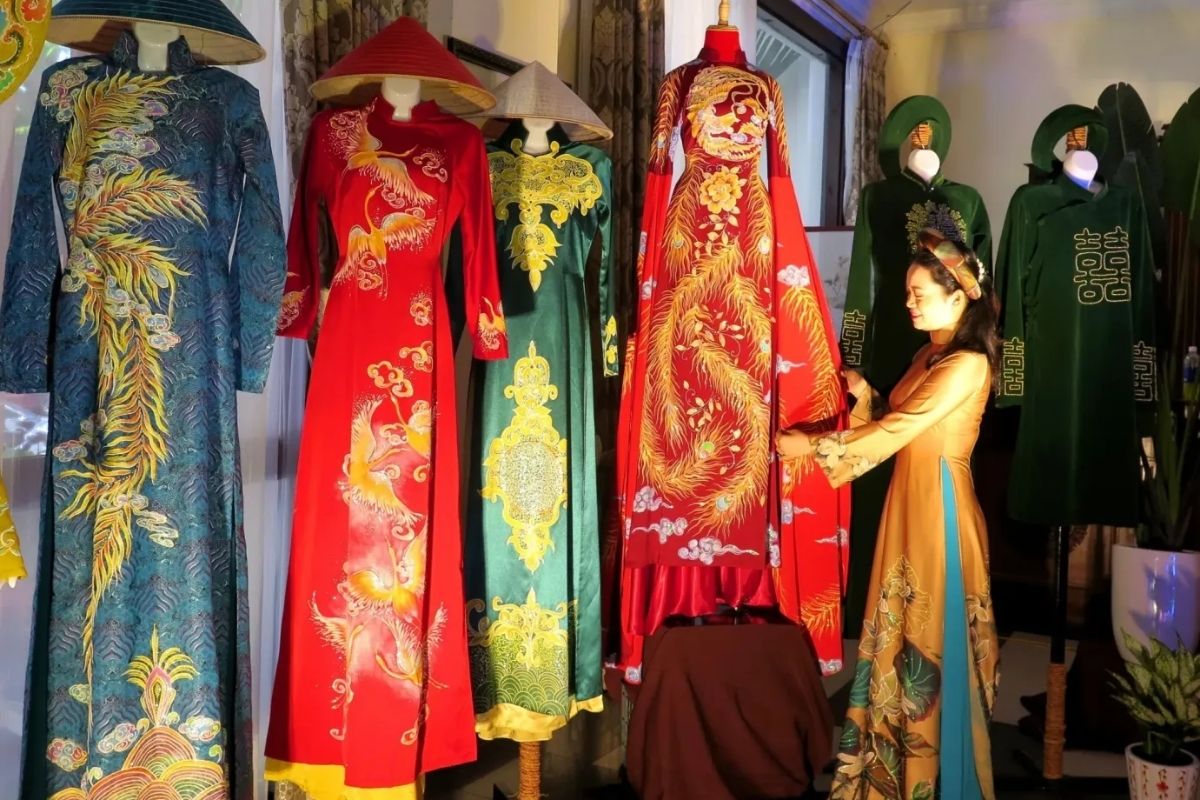
Ao Dai (Source: vietnamplus)
Traditional Ethnic Costumes Across Regions
Vietnam’s cultural diversity shines through its traditional attire, representing the unique identities of 54 ethnic groups. Each region showcases its style, reflecting the lifestyle, beliefs, and climate of the area.
- Northern Vietnam: Colorful Highlands Attire
- H’Mong Costumes (Sapa, Lao Cai Province): Characterized by brilliant indigo clothes with detailed embroidery and silver adornments. Best appreciated at Sapa Love Market (on Saturdays in the evening), where H’Mong youth come in their ethnic attire.
- Dao Costumes (Bac Ha, Lao Cai Province): Distinguished by bright red headdresses decorated with silver coins. See them at the Bac Ha Market (Sunday only) to experience the brightly colored clothing.
- Thai Costumes (Mai Chau, Hoa Binh Province): Black skirt and white blouse with silver belt. Experience this during the Xen Muong Festival (October), a traditional Thai celebration.
- Central Vietnam: Spiritual and Symbolic Attire
- Cham Costumes (Ninh Thuan and Binh Thuan Provinces): Traditional long dresses with intricate patterns, worn during the Kate Festival (October) at Po Klong Garai Tower, Ninh Thuan.
- Co Tu Costumes (Quang Nam Province): Bold geometric patterns handwoven in celebration of the Buffalo Sacrifice Festival (April), which is an important Co Tu festival.
- Southern Vietnam: Rich Cultural Fusion
- Khmer Costumes (An Giang, Soc Trang Provinces): Colorful sarongs and embroidered shirts in Buddhist-inspired hues. Try it out during the Ooc Om Bok Festival (November), the Khmer moon worshipping festival.
- Ede Costumes (Province of Dak Lak): Black and earthy tones with red patterns. Best observed during the Elephant Racing Festival in Buon Don in March.
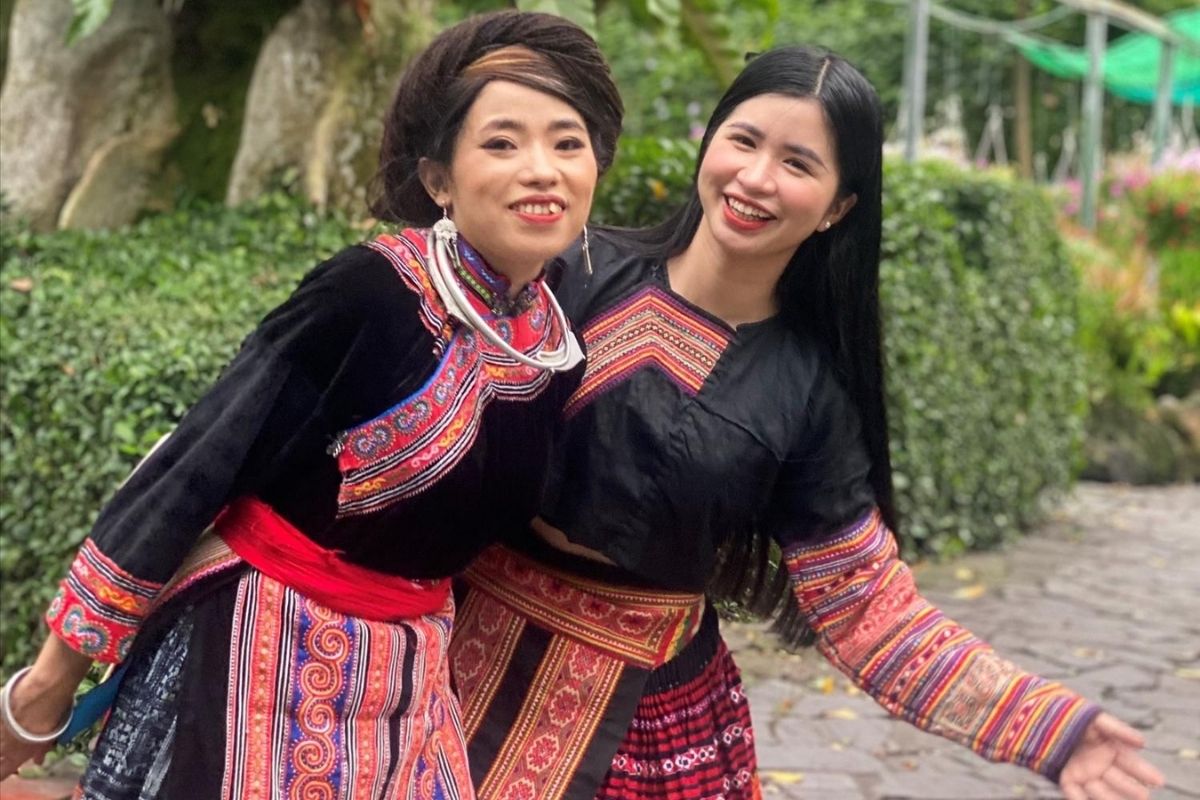
H’Mong Costumes (Source: scovgov)
Regional Delicacies to Savor
Vietnamese cuisine is a reflection of the nation’s rich geography and culture, with each region offering its style of food, ingredients, and preparation methods. Let us start our journey through Vietnam, one meal at a time:
Northern Vietnam: Subtle and Fragrant Flavors
Pho (Hanoi): Vietnamese cooking’s most iconic dish, Pho is aromatic beef noodle soup with fresh herbs, lime, and chili. Head to Hanoi’s crowded Old Quarter to have the best Pho at establishments such as Pho Bat Dan or Pho Thin.
- Pho Bat Dan, 49 Bat Dan Street, Hoan Kiem, Hanoi.
- Pho Thin, 13 Lo Duc Street, Hai Ba Trung, Hanoi.
- Price: 40,000 – 60,000 VND per bowl.
Bun Cha (Hanoi): Grilled pork patties on vermicelli noodles with fresh herbs and sour dipping sauce. For the real thing, head to Bun Cha Huong Lien, the restaurant where former US president Barack Obama ate.
- Bun Cha Huong Lien, 24 Le Van Huu Street, Hai Ba Trung, Hanoi.
- Price: 50,000 – 80,000 VND per set.
Cha Ca La Vong (Hanoi): A legendary grilled turmeric fish served with fresh dill, groundnuts (peanuts), and noodles (vermicelli). You can sample your delicacy in Cha Ca La Vong Restaurant, which has been offering the same for more than a hundred years.
- Cha Ca La Vong, 14 Cha Ca Street, Hoan Kiem, Hanoi.
- Cha Ca Thang Long, 21 Duong Thanh Street, Hoan Kiem, Hanoi.
- Price: 150,000 – 250,000 VND per serving.
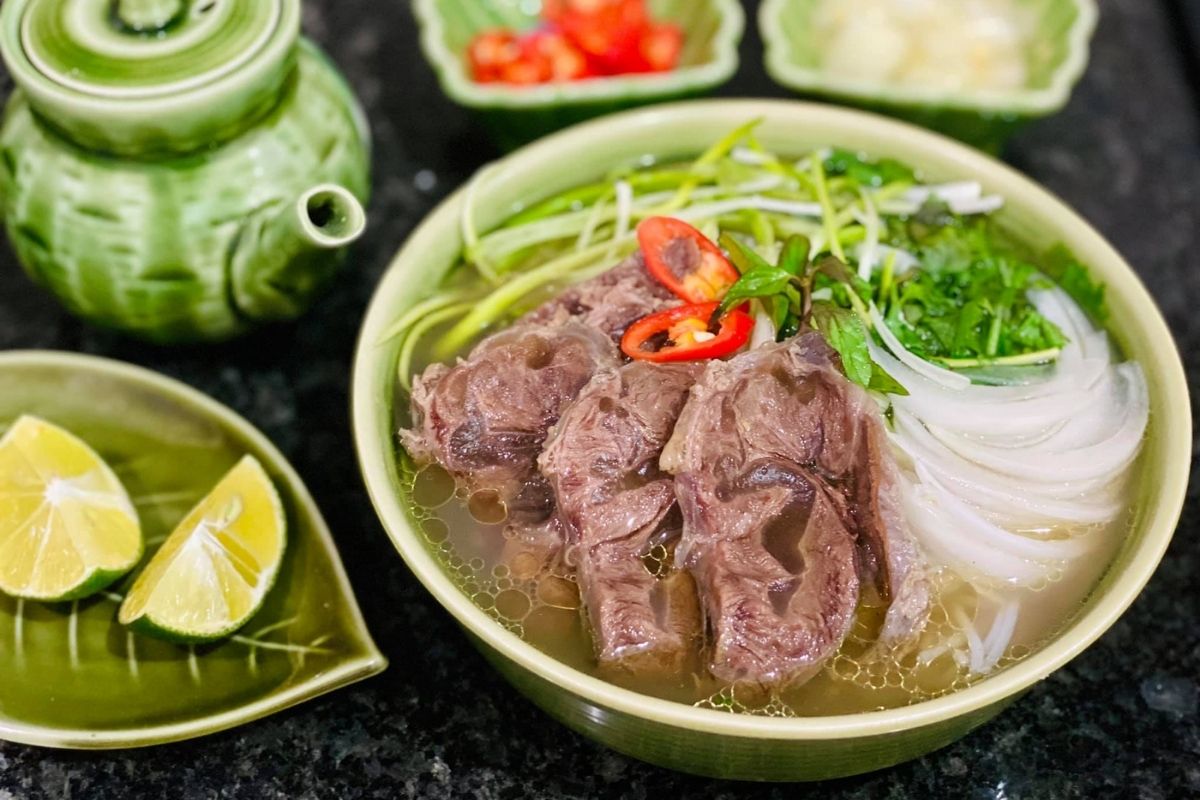
Pho (Hanoi) (Source: vinwonders)
Central Vietnam: Spicy and Bold Flavors
Mi Quang (Quang Nam Province): A flavorful noodle dish featuring yellow turmeric noodles, pork, shrimp, and fresh herbs topped with roasted peanuts and aromatic broth. Most delicious in Hoi An, where it originated.
- Mi Quang Ba Mua, 19-21 Tran Phu Street, Hoi An.
- Mi Quang Ong Hai, 6A Truong Minh Luong Street, Hoi An.
- Price: 30,000 – 50,000 VND per bowl.
Bun Bo Hue (Hue City): Spicy lemongrass beef noodle soup served with pork and beef and garnished with fresh herbs. Try the real taste at Hue’s Ba Do Restaurant.
- Ba Do Restaurant, 17 Ly Thuong Kiet Street, Hue.
- Bun Bo Mu Roi, 13 Ly Thuong Kiet Street, Hue.
- Price: 40,000 – 70,000 VND per bowl.
Cao Lau (Hoi An): One of Hoi An’s specialties, it consists of thick noodles, thin slices of pork, fresh leaves, and crunchy rice crackers. Sample it at Ba Le Well Restaurant in the ancient town of Hoi An. Ba Le Well Restaurant.
- Ba Le Well Restaurant, 45/51 Tran Hung Dao Street, Hoi An.
- Cao Lau Thanh, 26 Thai Phien Street, Hoi An.
- Price: 40,000 – 60,000 VND per serving.
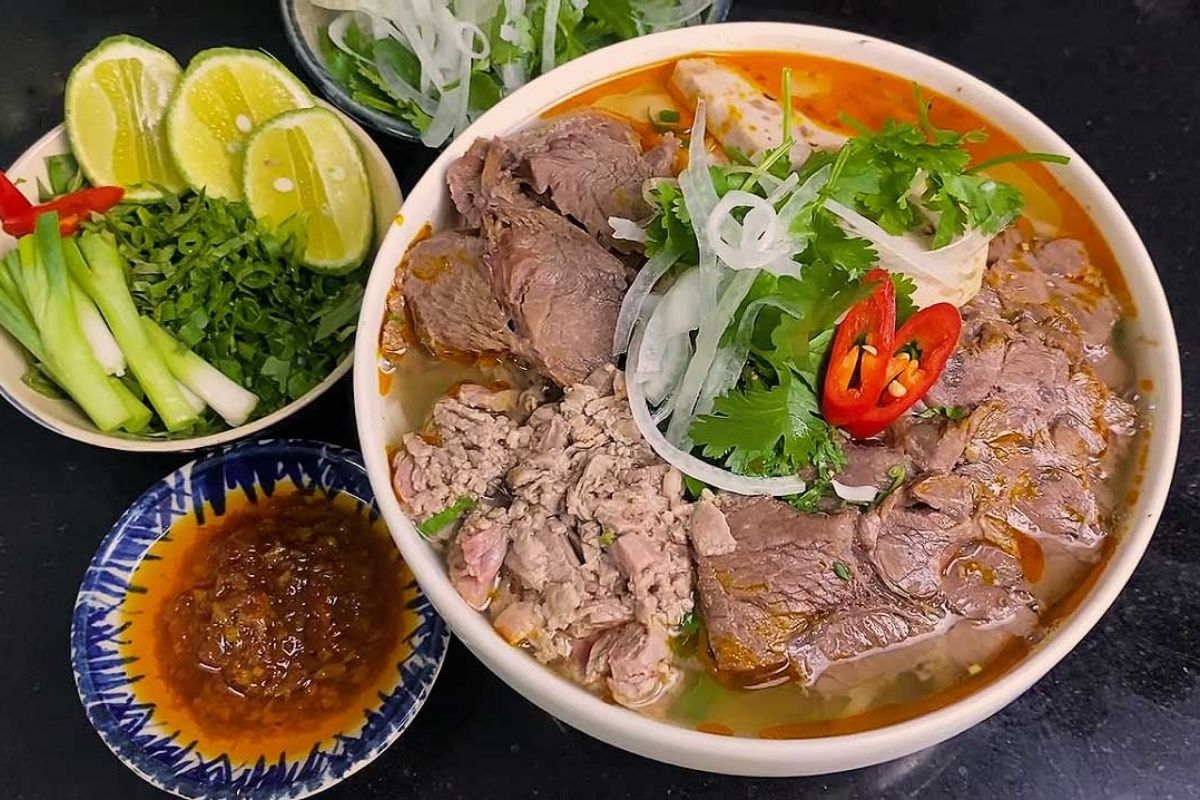
Bun Bo Hue (Source: hoasenfoods)
Southern Vietnam: Sweet and Savory Delights
Banh Xeo (Ho Chi Minh City): Crispy rice flour pancake stuffed with pork, shrimp, and bean sprouts and served with fresh herbs and dipping sauce. Sample it at Banh Xeo 46A in District 1 of Ho Chi Minh City.
- Banh Xeo 46A, 46A Dinh Cong Trang Street, District 1, Ho Chi Minh City.
- Banh Xeo Muoi Xiem, 204 Nguyen Trai Street, District 1, Ho Chi Minh City.
- Price: 40,000 – 80,000 VND per pancake.
Hu Tieu (Mekong Delta): A noodle soup that can be dry or in broth and garnished with pork, seafood, or beef. For something special, visit Can Tho’s floating markets.
- Cai Rang Floating Market, Can Tho City.
- Hu Tieu Sa Dec, Sa Dec Town, Dong Thap Province.
- Price: 20,000 – 40,000 VND per bowl (served from boat vendors).
Che (Ho Chi Minh City): One of Vietnam’s favorite dessert dishes prepared with bean sweets, jellies, fruits, and milk from coconuts. For something cooling and delicious, visit Che Khuc Bach Thanh Tan in District 3.
- Che Khuc Bach Thanh Tan, 68C Tran Hung Dao Street, District 1, Ho Chi Minh City.
- Che Mam Khanh Vy, 242B Su Van Hanh Street, District 10, Ho Chi Minh City.
- Price: 20,000 – 40,000 VND per serving.
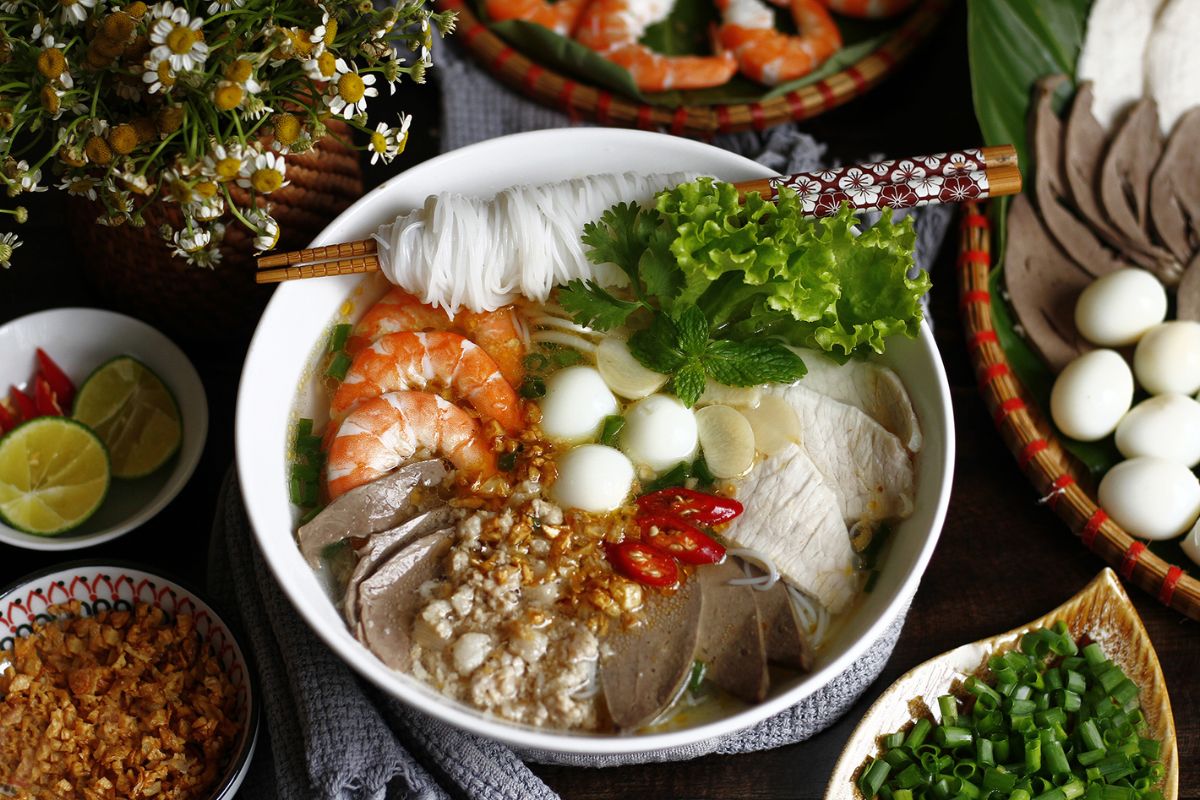
Hu Tieu (Mekong Delta) (Source: vnexpress)
Spiritual and Religious Experiences in Vietnamese Culture
Visiting Iconic Temples and Pagodas
Temple of Literature (Hanoi)
- Location: 58 Quoc Tu Giam Street, Dong Da District, Hanoi.
- Entrance Fee: 30,000 VND (Adults), 15,000 VND (Students).
- Highlights:
- It was founded in 1070, and it is the first university in Vietnam, devoted to Confucius and Vietnamese scholars.
- Walk through the peaceful courtyards, lotus ponds, and ancient steles bearing the names of scholars who had successfully cleared the imperial exams.
- Come during Tet (Lunar New Year) to witness pupils praying for good grades, an excellent representation of Vietnamese culture’s strong attachment to education.
Perfume Pagoda (Hanoi)
- Location: Huong Son (Perfume Mountain), My Duc District, Hanoi.
- Entrance Fee: 50,000 VND (Entrance), 80,000 VND (Boat ride).
- Highlights:
- A breathtaking temple and shrine complex tucked inside limestone mountains.
- Begin your journey on a scenic boat ride along the Yen Stream before hiking or using the cable car to the principal pagoda, Huong Tich Cave.
- It’s best seen in January-March during the Perfume Pagoda Festival, the largest Buddhist pilgrimage in the country, as thousands of worshippers visit to pray for good fortune.
My Son Sanctuary (Quang Nam)
- Location: Duy Phu, Duy Xuyen District, Quang Nam Province.
- Entrance Fee: 150,000 VND (Adults), 30,000 VND (Students).
- Highlights:
- A World Heritage Site of UNESCO, the temple complex was constructed by the Champa Kingdom between the 4th and the 14th centuries.
- Find the red-brick towers in the midst of green jungle, an emblem of the Cham people’s spiritual heritage.
- Visit during the time of the Kate Festival (October) to witness Cham ritualistic practices, dances, and offerings to their deities.
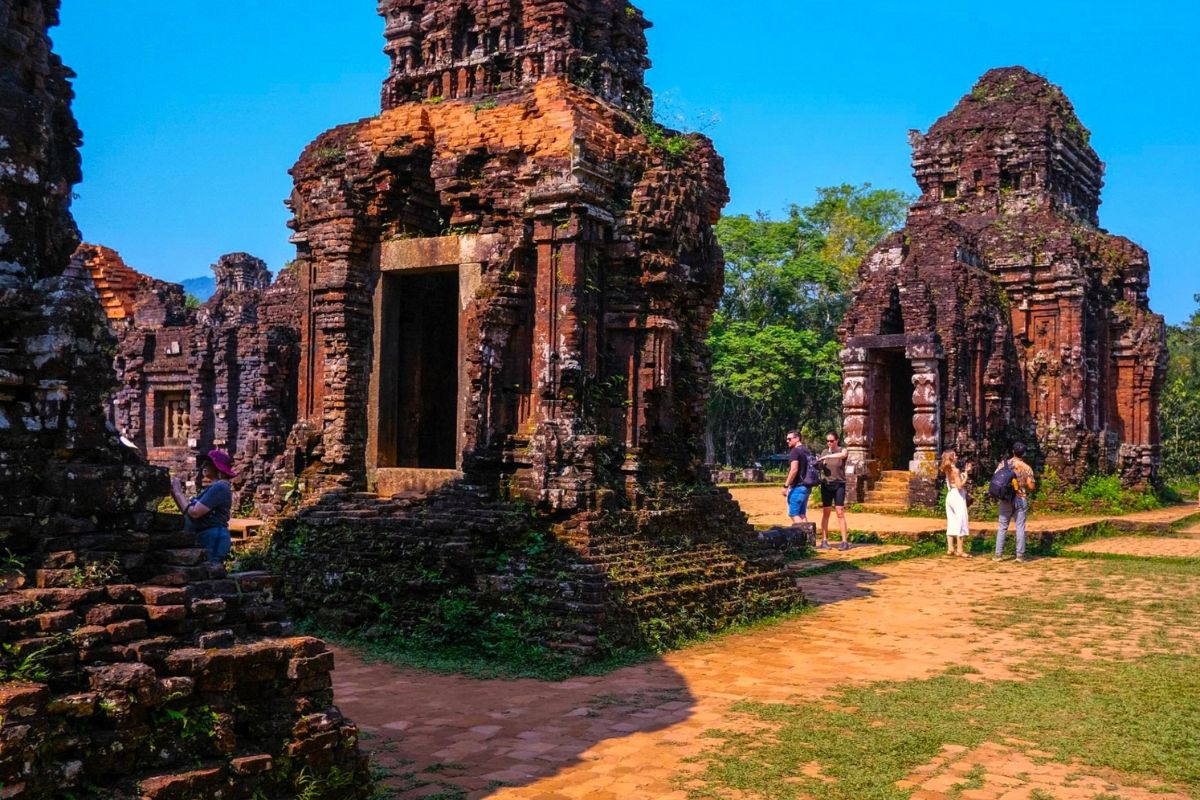
My Son Sanctuary (Quang Nam) (Source: vietnamcoracle)
Engaging in Traditional Religious Ceremonies
Lunar New Year (Tet Festival)
- Nationwide (Late January to February)
- Description:
- The foremost festival of Vietnamese culture, Tet, is all about family reunions, ancestor veneration, and celebration
- The houses are adorned with peach blossoms in the north, with apricot blossoms in the south and kumquat trees all across.
- Households also prepare delicacies such as Banh Chung (sticky rice cake in square shape), representing thankfulness to ancestors.
- Individuals light incense and present fruits and flowers, as well as pray for an auspicious new year at temples.
Mid-Autumn Festival (Tet Trung Thu)
- Nationwide (September or October)
- Description:
- It is also referred to as the “Festival of the Moon." This is an auspicious celebration for kids, with lion dances, colorful lanterns, and mooncakes.
- Families come together and share mooncakes, an age-old dessert representing harmony and family bonding.
- Best experienced in Hanoi’s Old Quarter, Hoi An Ancient Town, and Ho Chi Minh City, where streets get decorated with lively lantern displays.
Festival of Hung Kings (Gio To Hung Vuong)
- Hung Kings Temple Complex, Phu Tho Province (April 10 of the Lunar Calendar)
- Description:
- A national holiday in commemoration of the legendary Hung Kings, who founded the Vietnamese nation.
- Thousands of devotees ascend Nghia Linh Mountain to make offerings of incense and flowers and pray at Hung Kings Temple.
- The festival features classic music, dance, and performances demonstrating Vietnamese culture and history.
Buddhist Rituals at Local Pagodas
- Description:
- Buddhist Rituals at Local Pagodas The majority of Vietnamese people practice Buddhism, and pagodas are the center of spiritual life.
- Tran Quoc Pagoda (Hanoi), Linh Phuoc Pagoda (Da Lat), and Ba Na Hills Pagoda (Da Nang) should be visited to witness peaceful Buddhist rituals.
- Light incense sticks, burn flowers, and heed the soothing chants of monks, an oasis from the chaos.
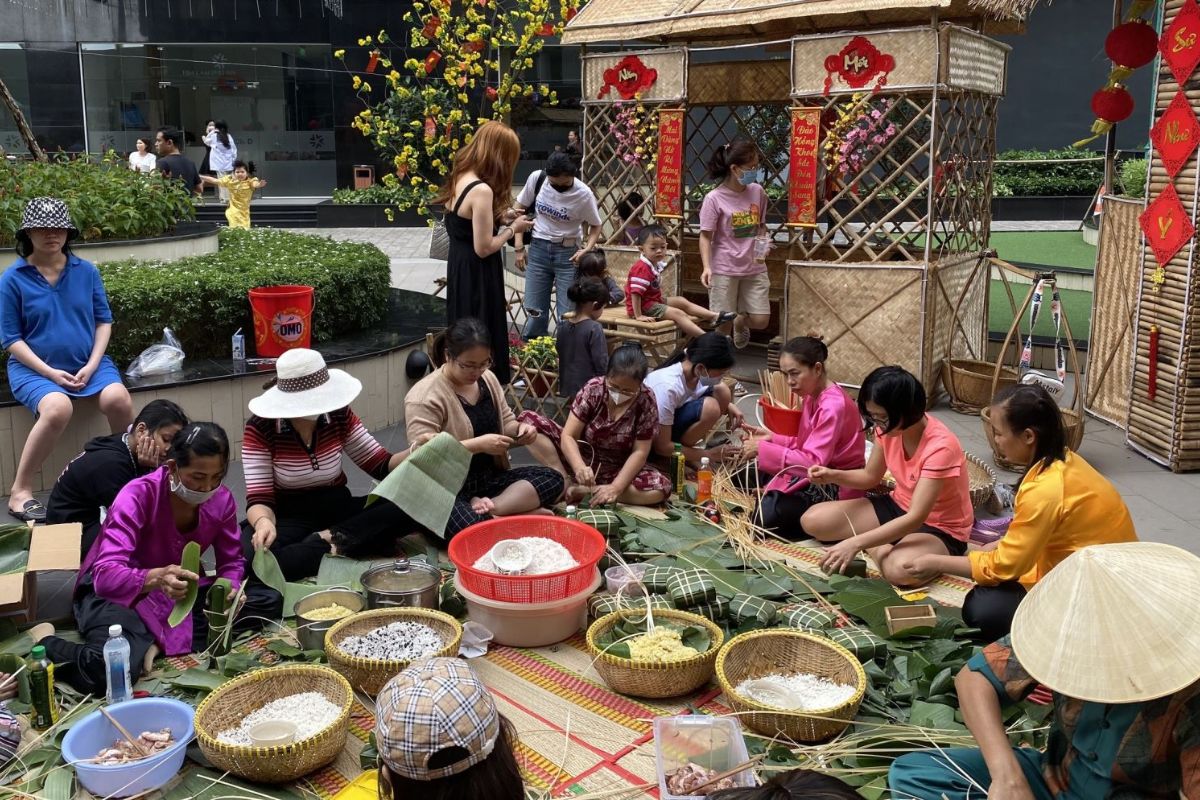
Lunar New Year (Tet Festival) (Source: baotintuc)
Vietnamese Folk Arts and Music – A Cultural Treasure of Vietnam
Water Puppetry – The Art of Storytelling
History and Cultural Significance
- Water Puppetry (Mua Roi Nuoc) is an original art form from the rice fields of the Red River Delta in the time of the Dai Viet era (11th century). Even then, it was used as entertainment for farmers who put on performances in paddy fields.
- Themes: Of performances of Vietnamese water puppets are Vietnamese folk tales, legends, and rural life. Thanh Giong (Saint Giong), Lac Long Quan, Au Co, and Dance of the Water Fairies are some of the popular stories.
- Symbolism: The stage of water demonstrates the significance of water in Vietnamese everyday life due to its agricultural roots.
How Water Puppetry is Performed
- Stage: A pool of water is used as the stage. Puppeteers operate from behind the curtain using extended bamboo rods which are under the water.
- Puppets: Made of wood and painted in brilliant colors, the puppets are able to move, dance and breathe fire.
- Music and Narration: The performance is supported by traditional Vietnamese music using drums, cymbals, and the Dan Bau (monochord). A humorous commentary is supplied by a narrator called “Teu."
Best Places to Watch Water Puppetry
- Thang Long Water Puppet Theatre (Hanoi)
- Location: 57B Dinh Tien Hoang Street, Hoan Kiem, Hanoi.
- Ticket Price: 100,000 – 200,000 VND per person.
- Highlights: Located by Hoan Kiem Lake, offering daily shows with English commentary.
- Hoi An Water Puppet Theatre (Hoi An)
- Location: 548 Hai Ba Trung Street, Hoi An.
- Ticket Price: 80,000 – 150,000 VND per person.
- Highlights: A cozy theater offering a close-up experience of water puppetry.
- Golden Dragon Water Puppet Theatre (Ho Chi Minh City)
- Location: 55B Nguyen Thi Minh Khai Street, District 1, Ho Chi Minh City.
- Ticket Price: 150,000 – 250,000 VND per person.
- Highlights: Located in the city center, this theater offers vibrant performances.
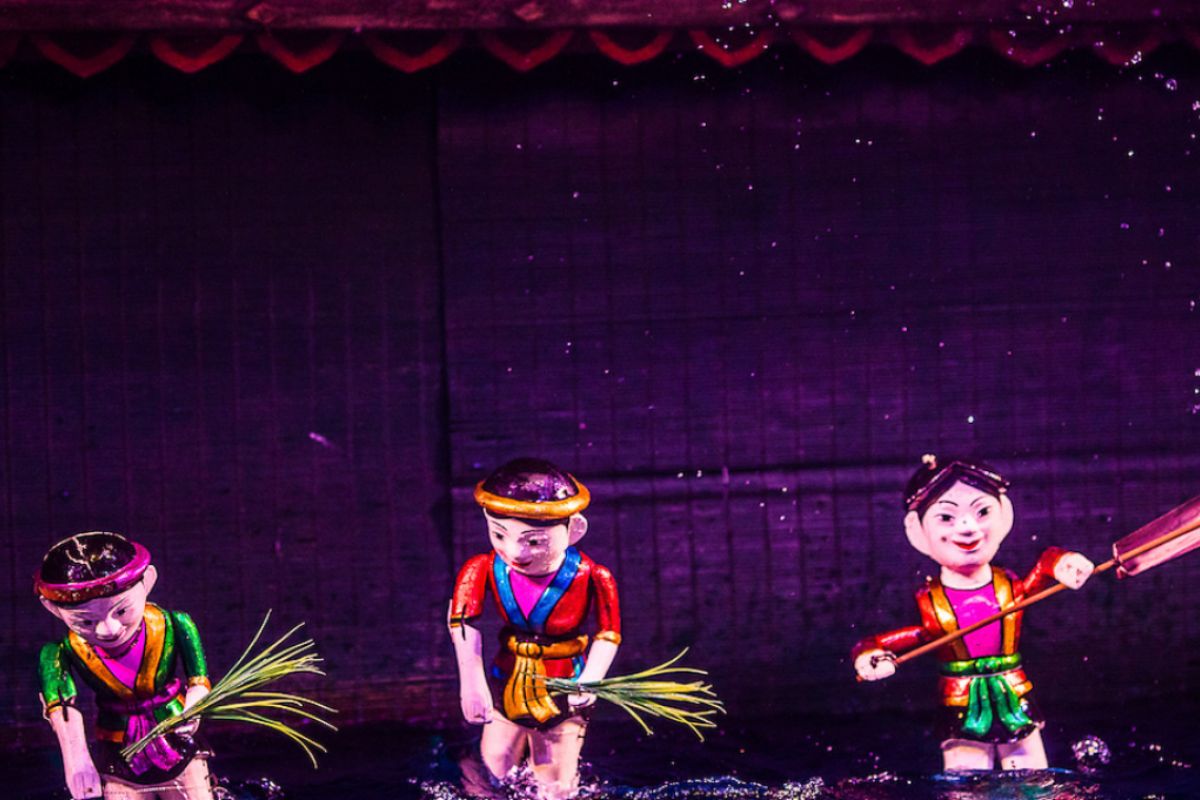
Water Puppetry (Source: vietnamtravel)
Traditional Music and Dance – The Soul of Vietnamese Culture
Northern Vietnam: Melodies of History and Love
Quan Ho (Love Duets)
- Origin: Bac Ninh Province.
- Description: A type of song where male and female vocalists sing poetic duets conveying love and camaraderie.
- Where to Experience: Lim Festival in Bac Ninh (February).
- Highlights: Performers wear national Ao Dai Vietnam attire and dance on bamboo canoes.
Ca Tru (Chamber Music)
- Origins: Hanoi and the Red River Delta.
- Description: A medieval style of chamber music featuring a woman’s voice supported by a Dan Day (three-stringed lute) and bamboo percussion.
- Where to Experience: Thang Long Ca Tru Theatre, 87 Ma May Street, Hanoi.
- Highlights: Renowned for having poetic lyrics and refined melodies.
Central Vietnam: Royal Elegance and Heritage
Hue Royal Court Music (Nha Nhac)
- Origin: Hue city.
- Description: An art form recognized by UNESCO, it’s the refined music of the Nguyen Dynasty performed at imperial rituals.
- Where to Experience: Duyet Thi Duong Royal Theatre in the Hue Imperial Citadel.
- Special Event: Hue Festival (held biennially in April).
- Highlights: Musicians in traditional costume play on such national instruments as the Dan Nguyet (moon lute) and Dan Bau (monochord).
Southern Vietnam: Heartfelt Melodies of the Mekong
Don Ca Tai Tu (Southern Folk Music)
- Origin: Mekong Delta in Southern Vietnam.
- Description: Characterized by its heartfelt melodies, the music portrays the happiness and grief of the people of the South.
- Where to Experience: Can Tho’s Floating Restaurants, Ben Tre Floating Restaurants, Vinh Long Floating Restaurants.
- Highlights: Cruise along the Mekong River and watch a live performance.
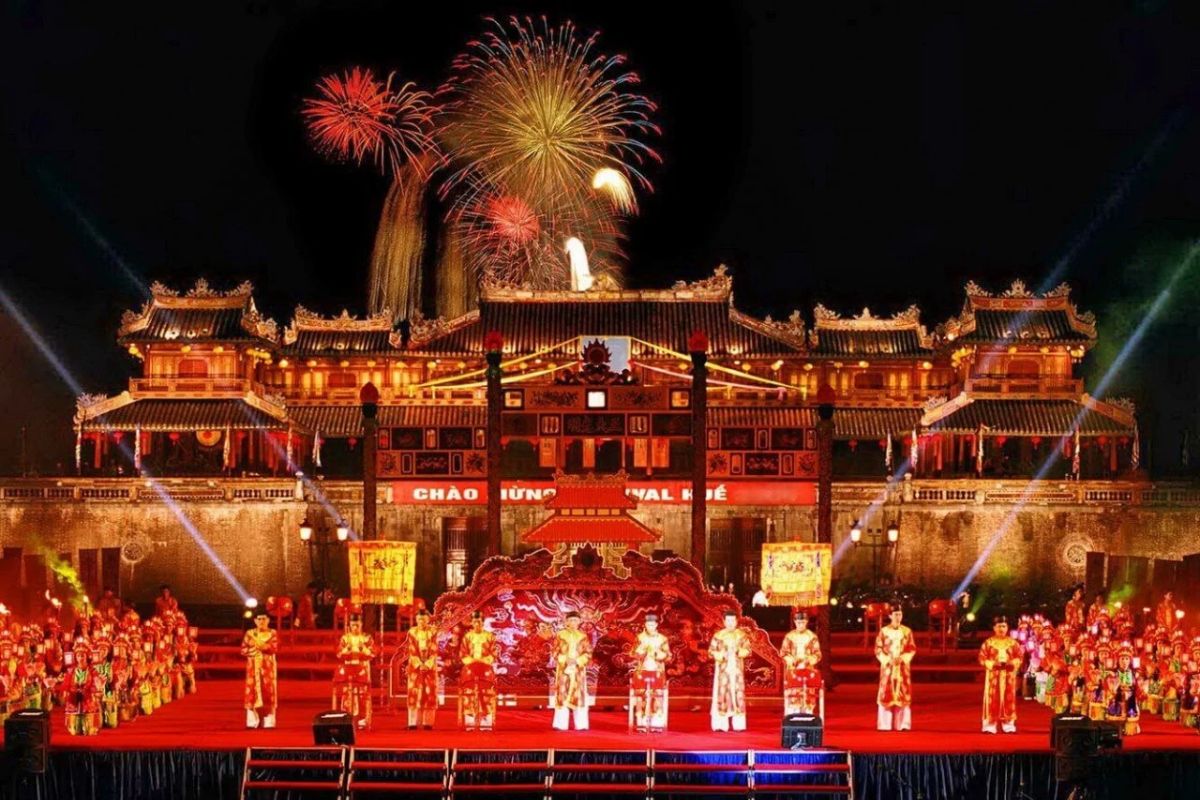
Hue Royal Court Music (Nha Nhac) (Source: vietnam)
Conclusion
Vietnam is a country of rich culture, colorful festival traditions, and eternal artfulness. From the poise of Ao Dai Vietnam to the religious beauty of Temple Vietnam, it is a cultural treasure house. Are you ready to discover? Select one of our handpicked Vietnam Package Tours and dive deep into the true spirit of Vietnamese culture. Begin your unforgettable experience today!
Frequently Asked Questions (FAQ) about Vietnamese Culture
1. What is typical of Vietnamese culture?
Vietnamese culture has long been celebrated for its great family values, reverence, ancestor veneration, and strong sense of fellowship. It also boasts rich culinary traditions as well as the national dress of the Ao Dai Vietnam, Buddhist-inspired spiritual beliefs, and vibrantly colored festivals such as Tet (Lunar New Year) and the Mid-Autumn Festival. The nation’s rich cultural heritage is also seen through dance, music, and the distinctive art of water puppetry.
2. What is the main culture in Vietnam?
The predominant culture of Vietnam is Confucianism combined with Buddhism and Taoism, and is commonly called the “Three Teachings.” These beliefs impact the customs, traditions, and moral ethos of the Vietnamese people. The culture is also shaped by its history with deep traditions in ancestor practices, respect for the elderly, and the love of celebration.
3. What is an interesting fact about Vietnamese culture?
An interesting aspect of Vietnamese culture is the presence of 54 ethnic groups who have their own distinct customs, languages, traditional attire, and holiday traditions. For instance, while the H’Mong in the mountainous north celebrate the festival of the Gau Tao, the Cham in mid-country Vietnam celebrate the festival of the Kate. This diversity in culture is proof of the rich heritage of Vietnam.
4. What are the famous cultural elements in Vietnam?
Famous cultural elements of Vietnamese culture include:
- Traditional Attire: The stunning Ao Dai Vietnam, reserved for special days and festivals.
- Sacred Sites: Temple and pagoda complexes like the Temple of Literature (Hanoi) and My Son Sanctuary (Quang Nam).
- Festivals: Lunar New Year (Tet), Mid-Autumn Festival, and Hung Kings’ Festival
- Vietnamese Cuisine: Pho in Hanoi style, Bun Cha, Mi Quang, Bun Bo Hue, and Banh Xeo.
- Art Forms: Quan Ho (Love Duets), Hue Royal Court Music, Ca Tru (Chamber Music), and Water Puppetry





